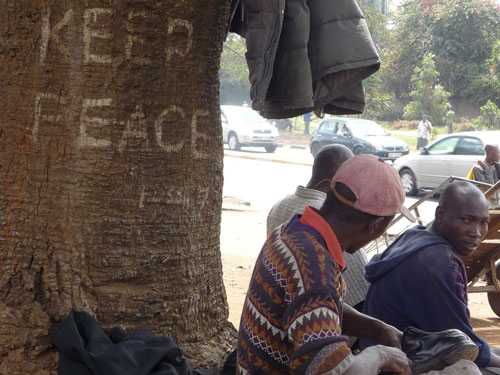
This article was originally published by Saferworld on 4 November, 2015.
The need for a national framework to guide efforts to prevent conflict and build peace in Kenya cannot be overstated. For a long time Northern Kenya was seen as the most problematic region of the country, with frequent incidents of cattle rustling fuelled by the proliferation of small arms and light weapons. The rest of Kenya remained ‘peaceful’, except for the cycles of political violence that have erupted during every election since the introduction of a multi-party democracy in 1992. The worst political violence was experienced in 2007–08, raising concern about the country’s capacity to deal with such high levels of violence and the effectiveness of its early warning and response, mediation, and security deployment.
Today, despite the relative calm, the country still has a long way to go before being considered peaceful; there are misconceptions and misinterpretations around the implementation of devolution, tensions within and across counties over boundaries, and the discovery of oil and minerals further complicates inter-community relations. Kenya’s high number of unemployed youth remains a threat to the country’s stability, as they are at risk of being recruited into armed gangs or manipulated by politicians to intimidate their opponents and their supporters, and cause violence.
The race to the 2017 general elections is already causing tension as political alignments take shape in a way that is likely to split Kenyans along ethnic lines, and this is further perpetuated by inflammatory rhetoric from politicians that could incite communities to violence. Competition over land remains a sensitive issue, with much unease over its allocation and redistribution across different regions. Land laws aimed at improving the situation are yet to be enacted, amounting to a perpetual injustice. Inter-ethnic tensions are further fuelled by the rise of radicalisation and frequent attacks by ‘extremist’ groups such as Al Shabaab.
Over the years, the Government of Kenya and non-state actors have made great efforts to prevent conflict, with interventions focusing on resolving social, political and economic grievances. The growth of peacebuilding organisations, the existence of the National Steering Committee on Peacebuilding and Conflict Management (NSC) and the establishment of provincial peace forums and district peace committees have been significant in the mitigation of conflicts – including pastoralist conflict, electoral violence and cross-border violence – and attempts to prevent terrorist attacks through early warning information and mediation. While these measures have been effective, they have not been guided by a policy that would ensure the efforts are coordinated among all relevant actors. This means we have ended up with ad hoc initiatives that are reactionary in nature and sometimes do more harm than good.
The adoption of the peace policy by the National Assembly on 27 August 2015 – which comes after more than ten years of stakeholder consultations with civil society organisations (CSOs) and the government, field surveys, interviews and reviews of policies and legislation – is a big step forward. Saferworld also played a part in getting to this point, working from July–September 2015 to give the final push needed for the policy to be adopted. We partnered with Peacenet and worked closely with the NSC, with support from Coffey International, to convene meetings with CSOs and MPs to lobby for the hastening of the process of adopting the policy – an intervention that came at a ripe moment.
The new policy now sets out an infrastructure for peace, taking into account the context within which it will operate as well as the institutional mechanisms appropriate to the Kenyan context. The infrastructure proposes that representatives from communities, civil society and the government work together to prevent a range of conflicts, including resource-based, religious, cross-border, and wildlife-related conflicts among others. Time and again relapses into violence in various parts of the country have been as a result of uncoordinated efforts. The peace policy will improve coordination in the prevention, mitigation and management of conflicts as well as ensure that peace processes are participatory, culturally sensitive, transparent and accountable. The policy also provides a legal framework for the allocation of resources to peace interventions by the government, which will go a long way in ensuring that conflict issues are addressed in real time.
Components of the peace structure are a National Peace Council, National and County Peace Secretariats, National and County Peace Fora, Local Peace Committees and Mediation Support Units. These components are interdependent and complementary in design and will be comprised of experienced individuals with the capacities to prevent and transform conflicts.
What began in 1991 in Northern Kenya as an initiative to bridge the communication and trust gap between the government and communities is now an approved policy framework; a framework that will encourage stakeholders across the country who are working on peacebuilding initiatives to adopt a collaborative approach towards conflict prevention, management and resolution. This is indeed a big step in the coordination of peacebuilding interventions for successful conflict prevention.
Maria Osula is Project Officer, Governance and Peacebuilding, for Saferworld’s Kenya programme.
For more information on issues and events that shape our world, please visit ISN Security Watch or browse our resources.

